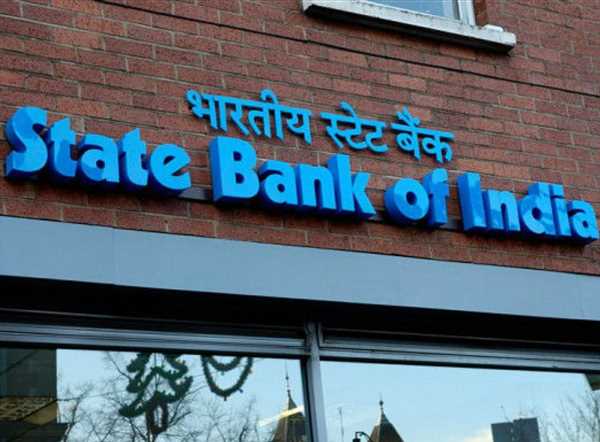‘No Challenge To SBI’s Retail Loan Book’
‘When we look at the quality of our retail loan book, the non-performing asset percentage is low.’
State Bank of India, which saw healthy loan demand from the corporate sector in the fourth quarter (Q4) of 2021-2022 (FY22), expects loan growth to improve in the current fiscal year (2022-2023, or FY23).
Dinesh Kumar Khara, chairman, SBI, in an interview to Manojit Saha/Business Standard, details the bank’s plans to navigate a rising interest-rate environment.
SBI’s loan growth for FY22 was higher than the system growth. Q4 also saw good demand for corporate loans. Two months into FY23, do you see the trend on corporate loan demand continuing?
Certainly. It was mainly due to better utilisation of working capital limits by large corporates and availing of term loan facilities.
We have a healthy conduit of proposals for corporate loans under review.
These augur well for corporate credit growth.
As and when we see capacity utilisation levels improve beyond a threshold, it will need better utilisation of working capital.
Our retail engine continues to do well. We will have corporate support.
Do you expect better credit growth in FY23?
We expect credit growth to be at the same levels, if not better.
Do you think the retail credit growth momentum will sustain, interest rate hikes notwithstanding?
We have seen positive trends in terms of retail loan growth.
When it comes to retail loans, the borrower will also look at the equated monthly instalment to net annual income ratio.
During inflationary times, salaries increase as well.
If loans are contracted at a particular rate of interest, it makes sense for borrowers to create an asset by increasing leverage.
Asset prices keep increasing during inflationary conditions, whereas repayment obligation remains constant or increases marginally.
To that extent, it is beneficial to the borrower to create assets by increasing leverage.
Coming to asset quality, there are reports of layoffs and attrition in technology-related sectors. Many working in these sectors availed of loans via the Yono application. What kind of asset quality pressure do you see from the salaried class?
These loans were given to corporate salary package customers — a very significant part comprises government and public sector employees, and defence personnel.
The kind of stress you indicated we did not witness.
When we look at the quality of our retail loan book, the non-performing asset percentage is low.
We do not envisage any challenge to our retail loan book.
The second is the small and medium-sized enterprises (SME) sector. SBI’s loan growth in this sector was around 25 per cent compound annual growth rate in the past three years. Several factors have impacted its volumes. What kind of stress do you see from the SME sector?
Our experience does not suggest that.
We have been very careful in terms of ensuring credit quality of the bank remains superior.
We have indicated that if we visualise any indication of stress, we’d rather provide for such stress before we are mandated in terms of regulatory prescription.
That is why our provision coverage ratio is over 90 per cent. We have built in enough cushion on the balance sheet.
SBI’s capital adequacy ratio (CAR) at the end of Q4FY22 was 13.83 per cent. Do you see the need to raise equity capital in FY23, given the kind of growth the bank will have?
We will take a call. Given the kind of growth we are visualising, we are well-equipped to support that kind of growth with the current CAR.
If required, we can raise tier I, II bonds, depending on how the situation plays out.
We have not gone to the board for any kind of proposal for a capital-raise.
Are you looking to list some of your subsidiaries — SBI Mutual Fund or SBI General Insurance — in FY23?
We have nurtured these subsidiaries over a period of time.
We will take them to the markets at an opportune time.
We will scout for capital for those pockets, but I don’t want to compromise when it comes to listing such entities at a time when they may not fetch the right price.
Do you think net interest margins can improve further in a rising interest-rate scenario?
Almost 75 per cent of our loans are linked to the marginal cost of funds-based lending rate, external benchmark-based lending rate or repo.
That way a rising interest-rate scenario turns out to be beneficial to banks that have a floating rate of interest, compared to a fixed one. We are well placed in that context.
With bond yields rising, how do you see the treasury performing? Is there any discussion with the regulator for some dispensation like amortising losses over a few quarters?
No, there is no such discussion.
The Reserve Bank of India has given permission for putting 23 per cent of net demand and time liabilities into the held-to-maturity category.
In a rising interest-rate scenario when yields are increasing, that gives more muscle to the banking system to earn better yields and also withstand mark-to-market losses which might be there in the available-for-sale (AFS) book.
If we witness decent credit growth, we will be in a position to shrink our AFS book.
Last year, we had provided for security receipts of nearly Rs 3,600 crore (Rs 36 billion). This year, we do not have any such obligation.
Feature Presentation: Rajesh Alva/Rediff.com
Source: Read Full Article



